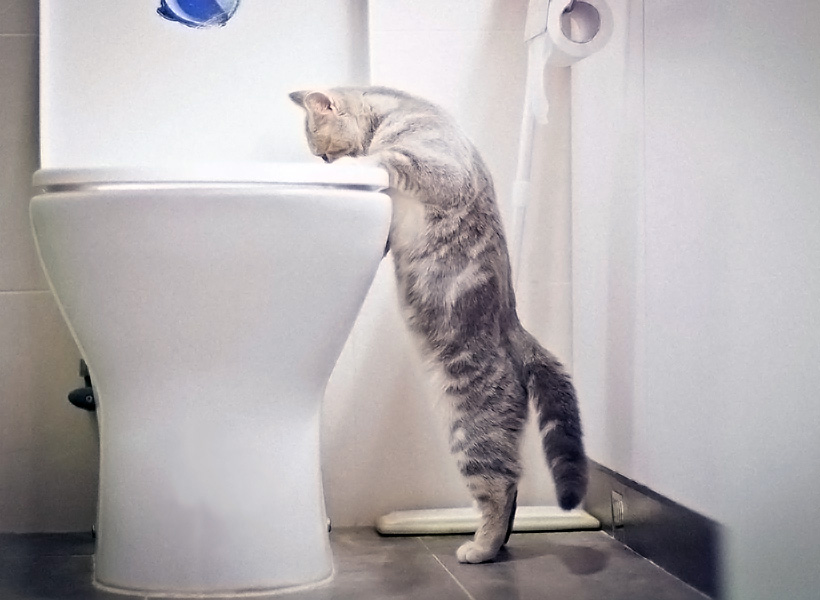Potential Issues of Flushing Cat Poop Down Your Toilet - Safeguard Your Pipes
Potential Issues of Flushing Cat Poop Down Your Toilet - Safeguard Your Pipes
Blog Article
Were you looking for ideas on Don’t flush cat feces down the toilet?
Intro
As feline proprietors, it's essential to be mindful of how we deal with our feline good friends' waste. While it might appear hassle-free to flush cat poop down the commode, this practice can have detrimental consequences for both the environment and human health.
Environmental Impact
Flushing pet cat poop presents unsafe virus and bloodsuckers right into the water, posturing a considerable threat to marine ecological communities. These impurities can adversely influence aquatic life and compromise water high quality.
Wellness Risks
Along with environmental concerns, purging cat waste can also pose wellness dangers to people. Cat feces might consist of Toxoplasma gondii, a bloodsucker that can cause toxoplasmosis-- a possibly extreme illness, specifically for expectant ladies and people with damaged immune systems.
Alternatives to Flushing
The good news is, there are much safer and more responsible ways to take care of pet cat poop. Consider the adhering to alternatives:
1. Scoop and Dispose in Trash
The most common method of dealing with cat poop is to scoop it right into an eco-friendly bag and throw it in the trash. Make sure to use a specialized trash scoop and dispose of the waste promptly.
2. Usage Biodegradable Litter
Opt for eco-friendly feline litter made from products such as corn or wheat. These trashes are environmentally friendly and can be safely gotten rid of in the garbage.
3. Bury in the Yard
If you have a yard, take into consideration burying pet cat waste in an assigned location away from vegetable yards and water sources. Make sure to dig deep sufficient to prevent contamination of groundwater.
4. Set Up a Pet Waste Disposal System
Invest in a pet waste disposal system specifically developed for pet cat waste. These systems utilize enzymes to break down the waste, reducing odor and environmental effect.
Conclusion
Liable pet ownership expands past offering food and sanctuary-- it also includes correct waste administration. By avoiding flushing feline poop down the commode and going with alternate disposal methods, we can reduce our ecological footprint and secure human wellness.
Why Can’t I Flush Cat Poop?
It Spreads a Parasite
Cats are frequently infected with a parasite called toxoplasma gondii. The parasite causes an infection called toxoplasmosis. It is usually harmless to cats. The parasite only uses cat poop as a host for its eggs. Otherwise, the cat’s immune system usually keeps the infection at low enough levels to maintain its own health. But it does not stop the develop of eggs. These eggs are tiny and surprisingly tough. They may survive for a year before they begin to grow. But that’s the problem.
Our wastewater system is not designed to deal with toxoplasmosis eggs. Instead, most eggs will flush from your toilet into sewers and wastewater management plants. After the sewage is treated for many other harmful things in it, it is typically released into local rivers, lakes, or oceans. Here, the toxoplasmosis eggs can find new hosts, including starfish, crabs, otters, and many other wildlife. For many, this is a significant risk to their health. Toxoplasmosis can also end up infecting water sources that are important for agriculture, which means our deer, pigs, and sheep can get infected too.
Is There Risk to Humans?
There can be a risk to human life from flushing cat poop down the toilet. If you do so, the parasites from your cat’s poop can end up in shellfish, game animals, or livestock. If this meat is then served raw or undercooked, the people who eat it can get sick.
In fact, according to the CDC, 40 million people in the United States are infected with toxoplasma gondii. They get it from exposure to infected seafood, or from some kind of cat poop contamination, like drinking from a stream that is contaminated or touching anything that has come into contact with cat poop. That includes just cleaning a cat litter box.
Most people who get infected with these parasites will not develop any symptoms. However, for pregnant women or for those with compromised immune systems, the parasite can cause severe health problems.
How to Handle Cat Poop
The best way to handle cat poop is actually to clean the box more often. The eggs that the parasite sheds will not become active until one to five days after the cat poops. That means that if you clean daily, you’re much less likely to come into direct contact with infectious eggs.
That said, always dispose of cat poop in the garbage and not down the toilet. Wash your hands before and after you clean the litter box, and bring the bag of poop right outside to your garbage bins.
https://trenchlesssolutionsusa.com/why-cant-i-flush-cat-poop/

I ran across that page about How to Dispose of Cat Poop and Litter Without Plastic Bags while browsing on the web. If you please set aside a second to distribute this blog posting if you enjoyed reading it. Thanks so much for going through it.
Call Today Report this page